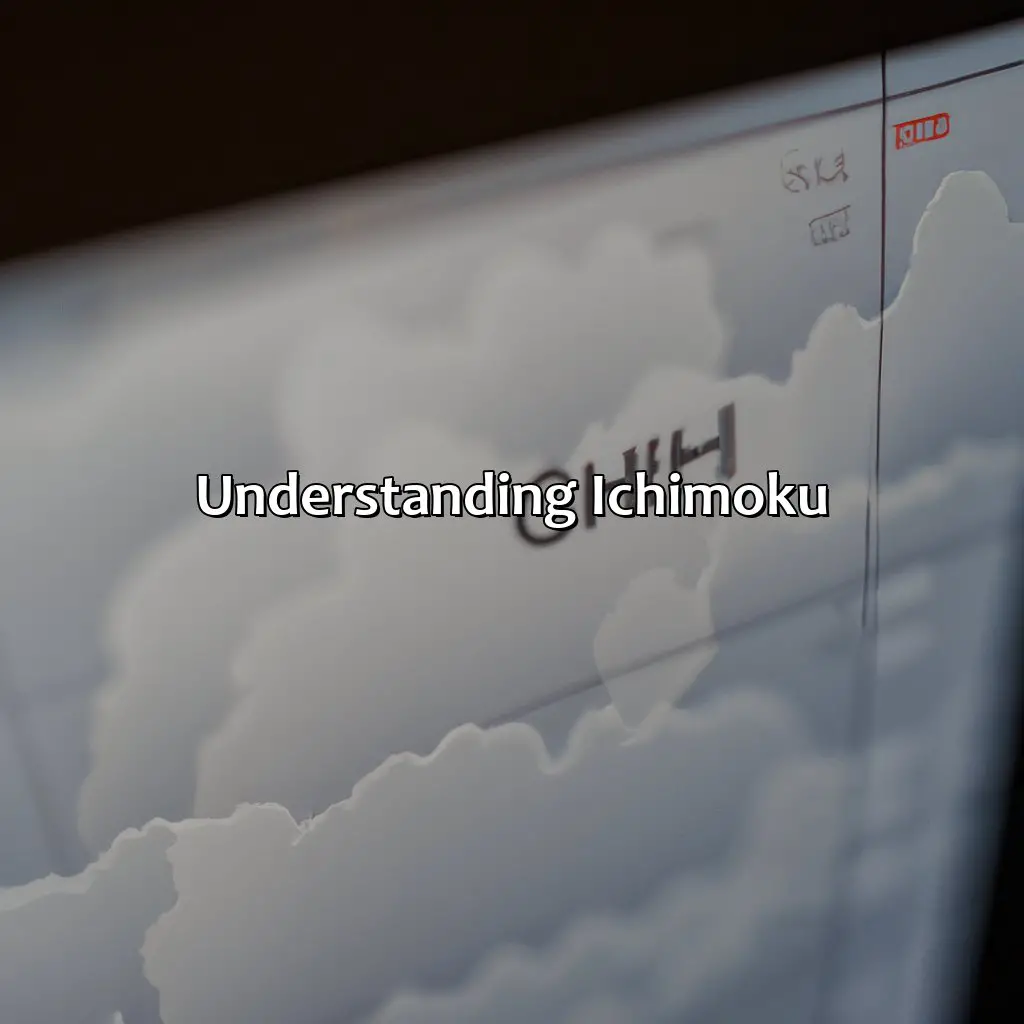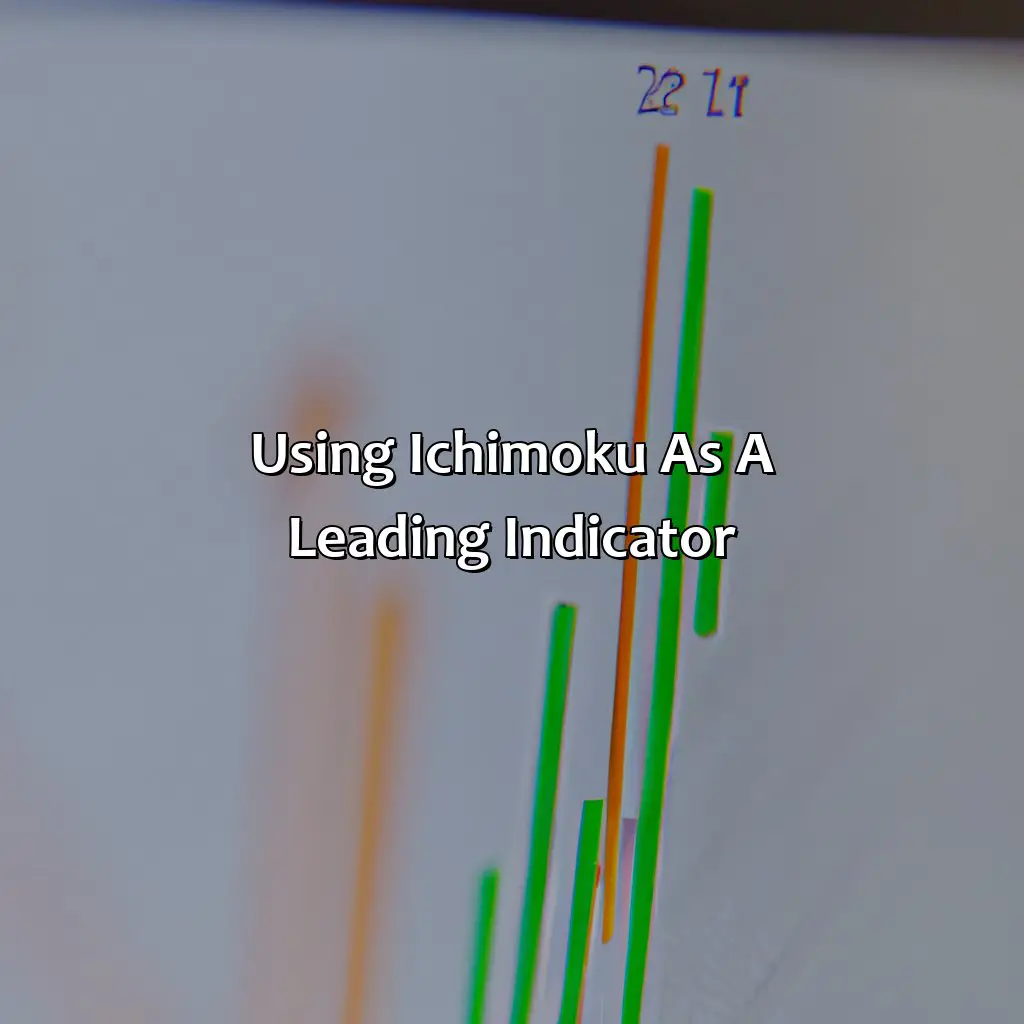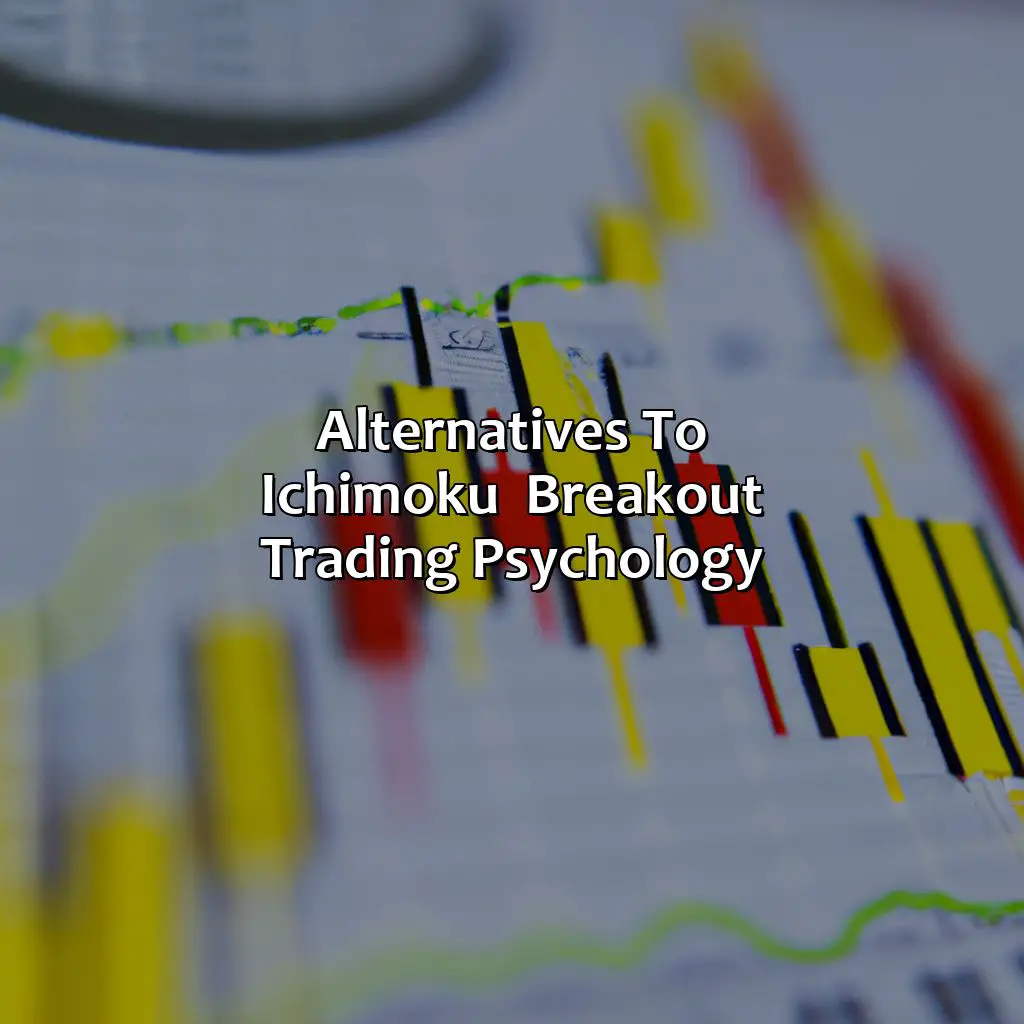
Key Takeaway:
- Ichimoku can be used as a leading indicator: Despite being a lagging indicator by definition, Ichimoku can be used to predict future price movements and identify trading opportunities. Traders should focus on the Cloud component that can help them spot bullish and bearish signals, assess trend direction, and set trade execution points.
- Ichimoku has limitations as a leading indicator: Traders must be aware of the potential for false signals, which can lead to significant losses. In addition, Ichimoku analysis requires technical skills and pattern recognition, which can limit its applicability for inexperienced traders.
- Alternatives to Ichimoku include moving averages and Relative Strength Index (RSI): Traders who prefer simpler indicators can use moving averages to identify trend direction and momentum. RSI can be used to assess overbought and oversold conditions and determine potential trend reversals. Ultimately, the choice of indicator depends on the trader’s trading style, risk tolerance, and market experience.
Understanding Ichimoku

Photo Credits: forexbrokerreport.com by Brian Nguyen
Ichimoku, a popular charting technique for price action trading, needs to be understood. Its components are Tenkan-sen, Kijun-sen, Chikou Span, and Senkou Span. Knowing how it works is essential. It reveals trend direction, volatility, and trading signals. Confirmation is also possible.
Components of Ichimoku
Ichimoku Cloud analysis involves various components that are essential to the execution of this trading strategy. The Ichimoku system is identified for its unique approach towards market analysis, which includes comprehensive forward time-moving capabilities.
| Component | Description |
| Tenkan-sen | A calculated short-term moving average that reveals the trend’s current direction. |
| Kijun-sen | This component is a mid-point-focused indicator that provides insight into medium-term rent reversals and trends. |
| Chikou Span | An indication of market sentiment and momentum through the present closing price shifted back in time. |
| Senkou Span | The Senkou Span A and B areas create a shading region referred to as “the cloud” and denote both short-term and long-term price trends patterns. |
Although there are four primary components of Ichimoku Cloud analysis, each can provide significant insight when utilized alone or in combination with other strategies. Together, these components work synergistically to identify important support and resistance barriers while also unveiling entry points that allow traders to optimize their profits.
The Ichimoku system was invented by Goichi Hosoda, a Japanese journalist who wanted a trading mechanism in his country’s markets. Still used today in Japan’s economy today, it has been widely accepted globally as a reliable tool for technical stock analysis.
Understanding how Ichimoku works is like having a crystal ball, but with a slight lag that reminds us of our mortal coil.
How it works
Ichimoku is a technical indicator used to identify trend direction, volatility, and trading signals based on price action. It uses five components, including the Tenkan-sen, Kijun-sen, Chikou Span, Senkou Span A and Senkou Span B. The Tenkan-sen and Kijun-sen lines work as moving averages that denote support and resistance levels. The Chikou Span is the lagging line that confirms the trend direction of the asset price.
The indicator works by plotting these components on a chart to generate buy or sell signals. When the Tenkan-sen crosses above the Kijun-sen, it is a bullish signal indicating an uptrend in prices. Similarly, when it crosses below the Kijun-sen, it is a bearish signal showing a downtrend in prices.
Another important feature of Ichimoku is using cloud-like formations formed by Senkou Span A and Senkou span B for confirmation of trends and identifying future support or resistance zones.
However, Ichimoku has some criticisms as well. One major issue with this indicator is lagging behind price action because its calculations are based on past data. Another drawback is false signals or noise generated during periods of market volatility.
For those who do not prefer using Ichimoku as a leading indicator can use other alternatives like Moving Averages (MA) and Relative Strength Index (RSI). MA acts as support/resistance while RSI measures momentum.
Using the Ichimoku Cloud to determine trend direction is like using a Magic 8-Ball to make trade executions – it’s not always accurate, but it’s still fun to try.
Using Ichimoku as a leading indicator

Photo Credits: forexbrokerreport.com by Harold Moore
Can Ichimoku Cloud act as a leading indicator? To decide, you must understand how to spot trend reversals. This is true for forex, stocks, commodities, and crypto. Learn about uptrends, downtrends, equilibrium, pullbacks, breakouts, support & resistance zones, and divergence. Also, know how to set entry/exit points. Backtesting systems, choosing discretionary/strategy-based trading, and picking the right trading style (swing, position, day, scalping) are important too.
Identifying trend reversals
Detecting Trend Reversals through Ichimoku
When trading, trend reversal identification is critical. Knowing when an uptrend is slipping into a downtrend or vice versa can help determine appropriate entry or exit points for traders.
Ichimoku employs trend analysis to pinpoint potential reversals through a series of calculations evaluating current price action against historical levels. By analyzing equilibrium levels, pullbacks within trends and breakouts beyond support/resistance zones, and divergences between the tenkan sen and kijun sen lines, the indicator identifies bull versus bear trends.
Further, Ichimoku signals junctures where traders may need to adjust positions: intersection of the tenkan sen and kijun sen line generally indicates a reversal on larger timeframes; go green (additional bullish signal) if Chikou Span is above current market price, confirming bullish sentiment of future expectations; go red (additional bearish signal) if Chikou Span instead cross below.
Keep in mind that Ichimoku always lags behind real-time price data in its calculations so it’s best used alongside other indicators like Moving averages or Relative Strength Index (RSI). Practice prudent risk management alongside its separate indications before acting on any single interpretation alone.
Deciding when to enter and exit a trade is like trying to solve a Rubik’s Cube with a blindfold on – use backtesting and a solid system, or rely on discretionary strategies, but either way, don’t expect a perfect solution.
Setting entry and exit points
Identifying the right entry and exit points can be crucial to the success of any trader. Such decisions require careful analysis and a solid trading strategy. Here is how using Ichimoku as a leading indicator can help in Setting Optimal Entry and Exit Points for trades.
- Identify the trend: To determine whether to buy or sell, traders must first identify the overall trend in the forex, stocks, commodities or cryptocurrency markets. The Ichimoku’s Tenkan-sen (conversion line) crossing above Kijun-sen (base line) indicates an uptrend while crossing below signals a downtrend.
- Use support and resistance levels: Once the trend is identified, it is necessary to pinpoint the levels of potential support and resistance. The Chikou span (lagging line) can help indicate these levels where prices have struggled before.
- Monitor risk-to-reward ratio: Traders need to consider their risk tolerance before entering trades. Identifying stop loss points alongside potential profit targets will improve risk management.
- Backtest your Trading System: Backtesting is crucial for traders who use discretionary strategies based on Ichimoku indicators when Swing Trading, Position Trading, Day Trading or Scalping across various financial instruments like forex pairs, stocks from exchanges all over the world including NASDAQ, NYSE just to name a few, this enables them to properly Ensure Proper Parameters are obtained through thorough testing so that their trading rules are not subjective but objective.
It’s essential to note that setting entry and exit points using solely Ichimoku cloud involves risks especially if used as a sole indicator since it tends to lag behind price action which may result in false signals moved by mere sentiment rather than actual market shifts which would result in potentially negative results like overtrading or increasing exposure towards impending risks. Guidelines must be followed combined with other technical analysis indicators such as Moving Averages or Relative Strength Index(RSI), thus enabling traders filter out false signals through confirming indicators. Ichimoku can be a valuable addition to traders’ technical analysis toolkit, but they should use it alongside other tools while trading across different financial instruments.
Ultimately, traders should backtest Ichimoku against their trading strategy in different market conditions and confirm its effectiveness before adding it into their trading system for better results. Don’t let Ichimoku’s false signals cloud your judgment – hone your technical skills and risk management.
Criticisms of using Ichimoku as a leading indicator

Photo Credits: forexbrokerreport.com by Willie Smith
To use Ichimoku in your trading strategy safely, you need to understand its limitations. We’ll examine criticisms to help. Risk management, technical skill, and pattern recognition are important. Lagging behind the price action and false signals may occur. Avoid these common pitfalls!
Lagging behind price action
Ichimoku is criticized for lagging behind price action, which means that the indicators take time to catch up with the current market conditions. As a result, traders may enter or exit a market too late, causing them to miss out on opportunities or experience losses. The delay can be particularly frustrating when dealing with fast-moving markets where seconds count.
In other words, Ichimoku’s lagging indicator nature causes it to respond slower than price action unfolding in real-time. This means that traders who rely solely on Ichimoku to make decisions may suffer from missed profit opportunities, as they often fail to react promptly enough when it comes to buying and selling assets.
It is important to note that despite its limitations as a leading indicator, many traders still use Ichimoku in conjunction with other technical analysis tools or fundamental analysis to generate trade signals accurately.
A study conducted by Investopedia found that Ichimoku has an average accuracy of 61% across multiple assets. Despite its downsides as a leading indicator, it still provides valuable insights into the market’s behavior and can be used in conjunction with other tools for better trading decision-making.
False signals from Ichimoku can make you question your trading strategy, but at least you’ll have a good excuse for your losses.
False signals
Many traders criticize Ichimoku for generating false signals as it occasionally produces buy or sell signals that turn out to be ineffective. These incorrect signals could lead traders astray and cause them to make the wrong trading decisions, resulting in losses. However, false signals are a common phenomenon in technical analysis, and one must be cautious while interpreting them.
False signals could occur due to market volatility or changes in market sentiments. There are times when a trend reversal seems evident, and Ichimoku calculates an entry signal, but it unexpectedly reverses direction, generating a false signal. It’s essential to consider multiple factors before making trading decisions instead of relying solely on one indicator like Ichimoku.
Traders could avoid potentially harmful trades by using other technical indicators simultaneously with Ichimoku. Utilizing volume indicators like the On-Balance-Volume (OBV) may help increase the accuracy of trading strategies.
Pro Tip: To minimize potential losses due to false signals, wise traders use stop-loss orders as fail-safes. Stop-loss orders help reduce risks and limit losses by preventing trades from being held open longer than necessary if the price moves unpredictably against their expectations.
Hey Ichimoku, ever heard of moving averages and RSI? They’re like your exes, but better at predicting breakouts and understanding trading psychology.
Alternatives to Ichimoku , breakout, trading psychology)

Photo Credits: forexbrokerreport.com by Mark Rodriguez
Discover other chart-analysis methods, such as Moving Averages and Relative Strength Index (RSI). In this section on alternatives to Ichimoku, we’ll look closely at these two. They could bring advantages or drawbacks when it comes to trading. Don’t miss out on the opportunities they can give you to improve your trading psychology and spot breakout opportunities.
Moving averages
Moving Averages- The Ins and Outs
A popular technical analysis tool, moving averages allow traders to identify underlying trends. They are derived by summing a pre-determined number of prices and then dividing by that number, creating a moving average value. The most commonly used timeframes for moving averages are 20-50 day periods.
By monitoring the interaction between price action and the moving average, traders can better determine potential trade entries or exits based on whether the price is above or below the moving average line. Moving averages can also be used to identify support and resistance levels.
When compared to Ichimoku, moving averages have the advantage of being less complex and more easily understandable for new traders. Additionally, they provide smoother lines with fewer false signals.
According to Investopedia, “Traders often use moving averages in conjunction with other technical indicators to make informed trading decisions.”
RSI: the friend who always tells you when to buy and sell (but doesn’t judge when you don’t listen).
Relative Strength Index
RSI, a technical indicator used in financial markets analysis, compares the magnitude of recent gains to recent losses to evaluate overbought or oversold conditions. The RSI oscillates between 0 and 100 where an asset is considered overbought when the RSI is above 70 and oversold when the RSI is below 30.
As an alternative to Ichimoku, traders can use the Relative Strength Index (RSI) to identify potential trend reversals or confirm existing trends. By measuring an asset’s strength, the RSI helps traders determine whether a security is likely to move up or down in price.
Although the RSI can be helpful in identifying overbought or oversold conditions, it should not be relied on as a standalone indicator. Other indicators such as moving averages or volume should also be considered. Moreover, traders should be aware that trading signals generated by the RSI may sometimes result in false alarms.
To maximize the effectiveness of using Relative Strength Index (RSI), traders can set additional parameters for entry and exit points. One approach would be waiting for confirmation from other technical indicators before making any trades based on RSI readings. Another strategy would be placing stop-loss orders below support levels identified by other charting tools.
Five Facts About Ichimoku Leading:
- ✅ Ichimoku Leading is a popular technical analysis tool used in trading stocks, currencies, and other financial assets. (Source: Investopedia)
- ✅ The tool is based on five components: Tenkan-sen, Kijun-sen, Chikou Span, Senkou Span A, and Senkou Span B. (Source: TradingView)
- ✅ The tool helps traders identify potential areas of support and resistance, as well as overall trends in the market. (Source: BabyPips)
- ✅ Ichimoku Leading can be used in conjunction with other technical analysis tools, such as MACD and RSI, for added confirmation. (Source: DayTrading.com)
- ✅ Traders can adjust the tool’s settings to fit their individual trading styles and preferences. (Source: The Balance)
FAQs about Is Ichimoku Leading?
Is Ichimoku a trend follower indicator?
Yes, Ichimoku is a trend-following indicator that is designed to help traders identify the direction of the trend and the strength of the trend. It is based on four key components: the Tenkan-Sen, Kijun-Sen, Senkou Span A and B, and the Chikou Span. Together, these components help traders determine the underlying trend, which can help them make more informed trading decisions.
What is the Trigger Line in Ichimoku?
The Trigger Line, also known as the Signal Line or Conversion Line, is one of two moving averages used in Ichimoku. It is calculated by taking the average of the Tenkan-Sen and Kijun-Sen. The Trigger Line is used to generate trading signals and is often used in conjunction with the Cloud, or Kumo.
What is Future Resistance in Ichimoku?
Future Resistance is a projection of the Senkou Span B, one of the two Cloud components in Ichimoku. It is calculated by projecting the Senkou Span B a number of Periods ahead of the current price action. Future Resistance can be used to identify potential levels of resistance in the future, which can help traders plan their trades more effectively.
What is a Bearish Kumo in Ichimoku?
A Bearish Kumo, also known as a Bearish Cloud, is a chart pattern in Ichimoku that is formed when the Senkou Span A is below the Senkou Span B. This indicates that the trend is bearish and that the price is likely to continue moving lower. Traders can use this pattern to identify potential short opportunities.
How can Ichimoku be used to generate trade ideas?
Ichimoku can be used to generate trade ideas by identifying trends, support and resistance levels, and potential signals. Traders can use the components of Ichimoku to identify potential entry and exit points, as well as stop-loss levels. Additionally, traders can use Ichimoku to identify potential trend reversals and to confirm other technical indicators.

